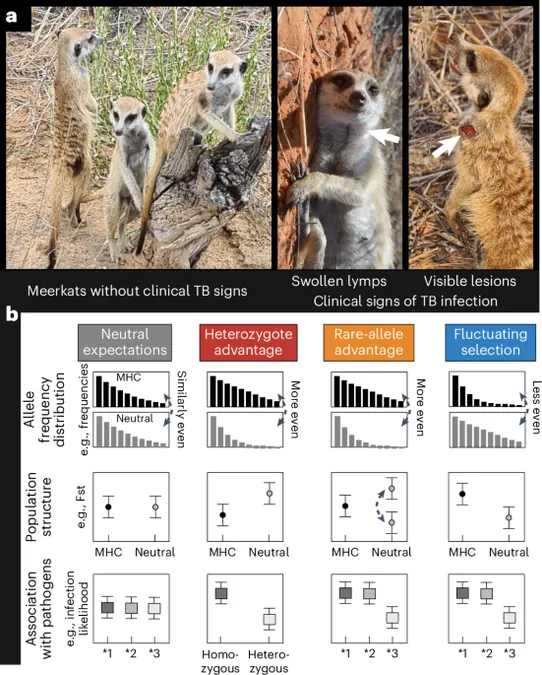
How 20 Years of Tuberculosis Shaped Meerkat Immunity
2025-08-25
Author: Wei
Unveiling Pathogen-Mediated Selection in Meerkats
For two decades, scientists have been closely monitoring meerkats in the Kalahari Desert, unraveling a remarkable story of evolution intertwined with a deadly pathogen, Mycobacterium suricattae. This bacterium causes tuberculosis (TB) in these social creatures, and researchers suggest that observing how the meerkats have adapted to this disease can shed light on the broader dynamics of pathogen-host interactions.
The Major Histocompatibility Complex: A Genetic Marvel
At the heart of this evolutionary tale is a crucial genetic component known as the Major Histocompatibility Complex (MHC). This genetic region is vital for immune responses, allowing vertebrates to recognize and react to pathogens. The study reveals how years of TB pressure have shaped the MHC in meerkats, highlighting a phenomenon known as "balancing selection," which helps maintain genetic diversity.
The Rare-Allege Advantage: A Survival Strategy
A fascinating concept in the MHC's evolution is the 'rare-allele advantage.' Essentially, when a common allele (a variant of a gene) becomes prevalent, pathogens evolve to evade it. This creates an intricate dance where rare alleles gain ground, only to be challenged once again. In meerkats, certain alleles have shown to correlate with TB susceptibility and survival rates, painting a picture of continuous evolutionary pressure.
Life Through TB: Insights Gathered Over 20 Years
The study concentrated on over 1,500 meerkats at the Kuruman River Reserve, examining their health records and genetic data. Researchers discovered that specific MHC alleles significantly impacted how these animals handle TB. For instance, the Susu-DRB*13 allele initially increased TB risks but later became associated with greater resilience and longer survival.
From Susceptibility to Resilience: The Evolutionary Journey
Initial observations indicated that meerkats with Susu-DRB*13 were more prone to TB symptoms. However, as years went on, these individuals demonstrated reduced susceptibility, indicating a remarkable evolutionary adaptation. This allele appears to have granted them advantages for survival and reproductive success—traits critical for species continuity.
Socio-Ecological Factors: The Big Picture
The study also highlighted the role of socio-ecological dynamics in TB spread. For instance, dominant meerkats faced higher TB risks, while subordinates exhibited drastically lower survival rates. Environmental factors like temperature and rainfall also played a role, influencing TB prevalence and mortality risk in the meerkat population.
Implications for Future Studies
This research not only showcases the intricacies of meerkat evolution in response to TB but also raises questions about the broader implications of pathogen-mediated selection across wildlife species. The evidence gathered from the Kalahari underscores the need for continued observation and the understanding of gene evolution in the face of diseases that threaten biodiversity.
This remarkable case study of the meerkats allows scientists to glimpse into the future of adaptive evolution and offers crucial insights that may ultimately inform conservation strategies for wildlife populations facing similar threats.




 Brasil (PT)
Brasil (PT)
 Canada (EN)
Canada (EN)
 Chile (ES)
Chile (ES)
 Česko (CS)
Česko (CS)
 대한민국 (KO)
대한민국 (KO)
 España (ES)
España (ES)
 France (FR)
France (FR)
 Hong Kong (EN)
Hong Kong (EN)
 Italia (IT)
Italia (IT)
 日本 (JA)
日本 (JA)
 Magyarország (HU)
Magyarország (HU)
 Norge (NO)
Norge (NO)
 Polska (PL)
Polska (PL)
 Schweiz (DE)
Schweiz (DE)
 Singapore (EN)
Singapore (EN)
 Sverige (SV)
Sverige (SV)
 Suomi (FI)
Suomi (FI)
 Türkiye (TR)
Türkiye (TR)
 الإمارات العربية المتحدة (AR)
الإمارات العربية المتحدة (AR)